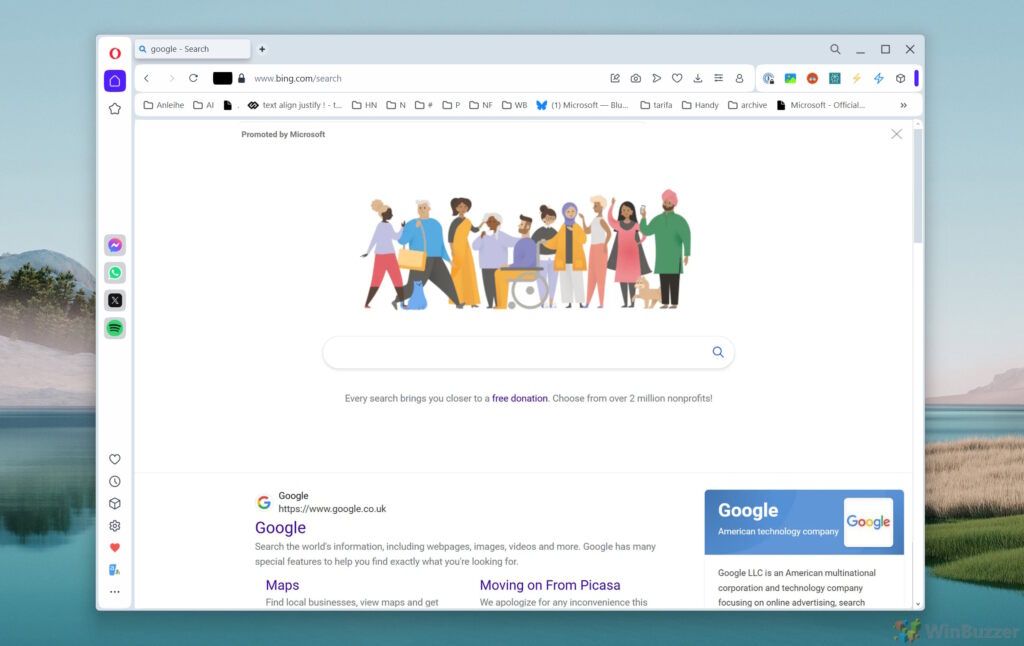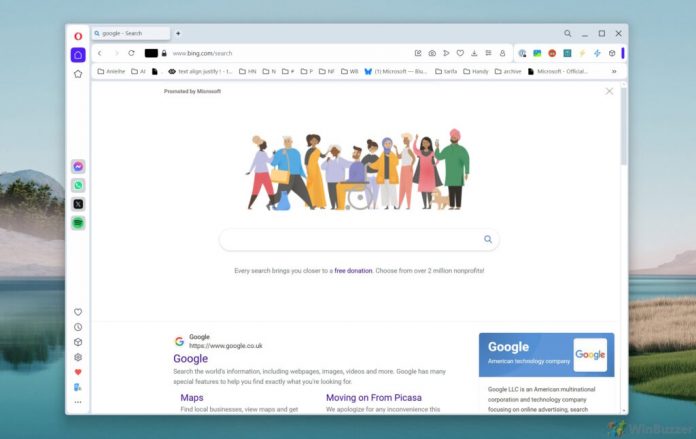Microsoft has quietly removed a contentious feature from its Bing search engine that mimicked Google’s homepage, sparking criticism from users and Google executives.
The design, triggered when users searched for “Google” on Bing, replicated the appearance of Google’s homepage, featuring a doodle-style image and a search bar. The feature was taken down shortly after widespread backlash, marking yet another episode in the competitive battle between the two tech giants.
Microsoft’s Google imitation created a deceptive experience by partially obscuring Bing’s default interface.
Upon searching for “Google,” Bing would scroll slightly down the page to hide its native search bar, further enhancing the illusion. This tactic immediately drew attention online, with tech-savvy users sharing screenshots and expressing concerns about Microsoft’s attempt to mislead inexperienced users.


When reports about this tactic emerged, Google was quick to respond. Parisa Tabriz, Google’s Chrome security lead, took to X (formerly Twitter), saying, “Imitation is the sincerest form of flattery, but Microsoft spoofing the Google homepage is another tactic in its long history of tricks to confuse users & limit choice.”
Her remarks reflected broader frustrations with Microsoft’s competitive strategies, which have often been criticized as aggressive and manipulative.
Imitation is the sincerest form of flattery, but Microsoft spoofing the Google homepage is another tactic in its long history of tricks to confuse users & limit choice.
New year; new low @Microsoft https://t.co/LKSNNKB7Hy
— Parisa Tabriz (@laparisa) January 6, 2025
The now-discontinued Google-like UI is a recent example of how Microsoft uses interface design to retain users. By presenting an interface nearly indistinguishable from Google’s homepage, the feature effectively masked Bing’s identity, making it appear as though users had switched search engines.
Although this approach may have succeeded in temporarily confusing some users, it also raised serious questions about transparency and user trust.
A History of Controversial Practices
Microsoft has long faced scrutiny for tactics aimed at keeping users within its ecosystem, particularly in the context of Bing and Microsoft Edge. Over the years, the company has employed a range of strategies to discourage users from switching to Google’s products.
These include modifying Chrome download pages to highlight perceived vulnerabilities in Google’s browser, embedding pop-up ads in Google Chrome, and introducing persistent notifications in Microsoft Edge.
Related: Microsoft’s Bing Chat AI Tricks Users Who Search for Chrome on Edge with Bogus Answers
Critics argue that such practices disproportionately target less experienced users who may be unaware of how to navigate away from Microsoft’s default settings. These tactics also exemplify what many describe as “dark patterns,” or design elements that manipulate user behavior in subtle but intentional ways. Such practices have increasingly come under fire in discussions about ethical design in technology.
Bing’s Push for Market Share
As part of its broader effort to compete with Google, Microsoft has sought to position Bing as a viable alternative by integrating advanced AI technologies. Bing incorporates features powered by OpenAI’s ChatGPT, offering conversational search capabilities and enhanced query handling.
These improvements have allowed Bing to differentiate itself in the search engine market, but controversies like the spoofed UI threaten to overshadow these technological strides.
Similarly, Microsoft Edge plays a crucial role in Microsoft’s ecosystem. The browser is designed to integrate seamlessly with Windows and Bing, offering features like vertical tabs, AI-powered shopping assistance, and productivity tools. However, these advancements are often accompanied by aggressive promotional tactics, such as pop-ups encouraging users to stick with Edge or dismiss Google.
Despite Microsoft’s efforts to improve Bing and Edge, its aggressive strategies have hindered broader adoption among tech-savvy users. For many, these tactics come across as intrusive and undermine trust in Microsoft’s platforms, making it difficult for the company to shed its reputation for prioritizing market dominance over user choice.
A Competitive Battle with Google
While Microsoft’s actions have drawn significant criticism, it is worth noting that Google employs its own promotional strategies, though they are generally viewed as less intrusive.
For example, Google prominently displays notifications encouraging users to download Chrome when accessing its services via other browsers. However, these reminders are limited to web-based notifications, unlike Microsoft’s system-level pop-ups and manipulated search results.
The rivalry between Microsoft and Google is rooted in their respective dominance in different areas of technology. Google leads the search engine market with an overwhelming share, while Microsoft has established a stronghold in productivity tools and operating systems.
The two companies’ strategies reflect their efforts to gain ground in each other’s domains, often at the expense of user autonomy.
Microsoft’s decision to remove the Google-like UI from Bing may be a tacit acknowledgment of the backlash it received, but it also highlights the ongoing challenges the company faces in balancing competitive strategies with ethical practices.

